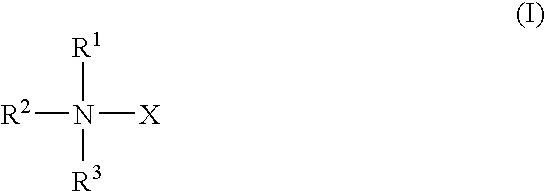Methods and compositions for mutation analysis of polynucleotides by liquid chromatography
a polynucleotide and liquid chromatography technology, applied in the field of methods for detecting nucleic acid mutations, can solve the problems of stranded dna offspring containing a heritable difference, altering its function, life-threatening or fatal effects
- Summary
- Abstract
- Description
- Claims
- Application Information
AI Technical Summary
Benefits of technology
Problems solved by technology
Method used
Image
Examples
example 1
Description of Temperature Dependent DMIPC Separation Process
[0191]This Example refers to FIG. 2 (heteroduplex separations over a 51° to 61° C. temperature range).
[0192]A DYS271 Mutation Standard (part no. 700210, Transgenomic) was hybridized and injected onto a reverse phase separation column (50 mm×4.6 mm ID) (DNASep® column, Transgenomic) at 51° C. The column was eluted at 0.9 ml / min with a gradient of acetonitrile in 0.1 M TEAA over 7 minutes. The chromatography was monitored at 260 nm using an UV detector.
[0193]The heteroduplex present in the mixture was not denatured at 51° C.; therefore, a single peak was observed (FIG. 2). The injection and chromatography of the sample was repeated at 1° C. incremental increases in temperature. A shoulder was observed on the low retention time side of the main peak at 53° C. indicating the potential presence of a heteroduplex. At 54° C. three peaks were seen. And at 55°–58° C. four peaks were seen indicating the definite presence of a mutati...
example 2
DHPLC Analysis of DNA Samples using Mobile Phase Lacking Betaine
[0194]DHPLC analyses were performed using a Transgenomic Model 3500HT WAVE® nucleic acid fragment analysis system. The system consisted of an Hitachi D-7000 interface, Hitachi D-7100 pump, Hitachi D-7250 autosampler, Hitachi D-7300 column heater with stainless preheat, Hitachi D-7400 UV detector, set at 260 nm, ERC-345a vacuum degasser module, and an Intel Pentium computer including Hitachi HSM control and acquisition software and WAVEMAKER® v. 4.1.38 software (Transgenomic). The aqueous mobile phase consisted of Buffer A: 100 mM triethylammonium acetate (TEM) (Transgenomic), and Buffer B: 100 mM TEAA in 25% acetonitrile (VWR Scientific). High purity water used for preparing buffer solutions was obtained using a Milli-Q water system (Millipore, Milford, Mass.). The buffers can be made to an all gravimetric formulation i.e. all components can be weighed out), and can be prepared under temperature controlled conditions (e...
example 3
tcDHPLC Analysis of DNA Samples using Mobile Phase Containing Betaine
[0208]The tcDHPLC analyses performed in this Example used a Transgenomic Model 3500 HT WAVE system as described in Example 2. The Mutation Standards described in Example 2 were subjected to DHPLC analysis in which the mobile phase contained betaine. The mobile phase included: Buffer A consisting of 4M betaine (ICN), 100 mM TEAA in 5% acetonitrile; and Buffer B consisting of 4M betaine, 100 mM TEAA in 15% acetonitrile. Betaine was prepared as a stock 5M solution and filtered through CHELEX®-100 (catalog no. 142–2832, BioRad Laboratories, Richmond, Calif.) prior to use in the preparation of the mobile phase buffers.
[0209]In FIGS. 6 and 7, the column (4.0 mm ID×10 mm) contained alkylated poly(styrene-divinylbenzene) beads (Transgenomic). For the DYS271 and the HTM219 samples, the column was eluted at a flow rate of 0.3 ml / min, with the gradient of Table 3.
[0210]
TABLE 3Time% B0.0450.5554.5904.61005.61005.7456.645
[0211]...
PUM
| Property | Measurement | Unit |
|---|---|---|
| Temperature | aaaaa | aaaaa |
| Temperature | aaaaa | aaaaa |
| Temperature | aaaaa | aaaaa |
Abstract
Description
Claims
Application Information
 Login to View More
Login to View More - R&D
- Intellectual Property
- Life Sciences
- Materials
- Tech Scout
- Unparalleled Data Quality
- Higher Quality Content
- 60% Fewer Hallucinations
Browse by: Latest US Patents, China's latest patents, Technical Efficacy Thesaurus, Application Domain, Technology Topic, Popular Technical Reports.
© 2025 PatSnap. All rights reserved.Legal|Privacy policy|Modern Slavery Act Transparency Statement|Sitemap|About US| Contact US: help@patsnap.com



